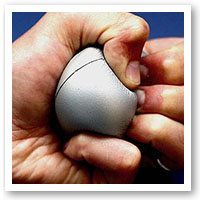Stress and your body, part 3.
 After having read Parts 1 and 2, you will now have a much better understanding of how your body can change when it is dealing with stress, and how these changes present themselves as symptoms. Having just gotten through the end of a year, christmas, and possibly sending your children back at school, you may very well have experienced first hand some of these manifestations of stress.
After having read Parts 1 and 2, you will now have a much better understanding of how your body can change when it is dealing with stress, and how these changes present themselves as symptoms. Having just gotten through the end of a year, christmas, and possibly sending your children back at school, you may very well have experienced first hand some of these manifestations of stress.
In this article I will explain how treatment can help. It is helpful to address the symptoms to make you feel better and more comfortable, but it is also very important to address the the cause ie the stress itself, and hence reduce your body’s’ reaction to it. Symptomatically we can change the pain and muscle tightness that occurs in the neck and shoulders by correcting any misalignment and jamming up in the vertebrae of the neck and upper back. By treating the spine at these areas we are improving movement of the spine and stimulating the nerves to flow freely and thereby stimulate the muscles to relax and work more freely.
The diaphragm can also be treated by a very gentle release that helps it relax, which then allow the ribs to release. Sometimes the spine at the level of the diaphragm may need an adjustment to help it release, and possibly some work needs to be done on the muscles between the ribs. This results in reduction in tightness and restrictions in movement, and allows improved breathing.
The jaw is another issue. When it tightens it can potentially tighten many areas of the skull, which can become very uncomfortable. The jaw can be released directly by working on the muscles and with gentle pressure to the jaw joints. Often it is necessary to look at the whole skull. With that we test for any jamming of the areas of the skull where the many bones that make up the skull join each other. This treatment is gentle and even relaxing , and has great results in reducing tightness and any headaches associated with it.
These are all ways to reduce any symptoms, but it is also important to address the degree to which your body reacts to stress. As seen in previous articles your body will react to stress, there is no changing that. But you may notice that your body will react in differing degrees with different stresses. Sometimes even to the point where you think it is excessive, or an over-reaction. The degree to which your body reacts is different for every person and is influenced by your past experiences and emotions. If we have had a bad experience in the past we will often be more sensitive to something similar happening, this is due to a learned response, or what can be called body memory.
There are two ways that we can look at these reactions. One is using the technique of Neurolink, the other is a techniques called Neuro Emotional Technique (NET). If you have been coping with stress for a while, it may be difficult for your body to come out of that response once the stress has stopped. Neurolink is a technique that resets your body and Nervous System. Just like a computer that has crashed when it has been overloaded with tasks and needs to be rebooted, our Nervous System is similar and Neurolink can ‘reboot’ your system.
NET is a technique that works on a deeper level to find out why we are reacting strongly to something, and what experiences in your past have led to this strong reaction. It also resolves and releases the memory of these past experiences that is being held in your body. This helps reduce any reaction of fear or anger or sadness, for example, that your body may currently be exhibiting.

 In clinic, we see patients with many and varied symptoms and conditions, but when it comes to working out the root cause of these conditions, often stress features in a big way.
In clinic, we see patients with many and varied symptoms and conditions, but when it comes to working out the root cause of these conditions, often stress features in a big way.

